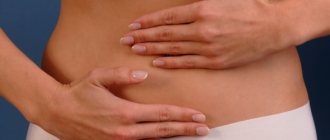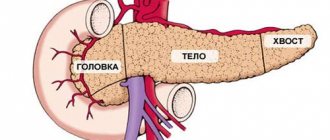The appearance of the first teeth is a signal from the child’s body that it is ready to accept new food. Very soon the baby will begin to nibble on soft cookies and add variety to his diet. A fact indicating the stage of growing up of a child cannot but rejoice. However, teething is an unpleasant process.
When the gums swell, the baby feels pain, often cries, and deprives the parents of sleep. An additional moment for excitement is the worry, the desire for the child to be healthy.
The appearance of baby teeth in a baby is accompanied by unpleasant sensations. The first signs go away after a while, but the second ones need the attention of adults. Symptoms of teething in a baby (remember, adults):
- A slight increase in temperature is possible. If the thermometer reads 38, you should help the child and give antipyretic medications.
- It is natural for babies to stop eating while their teeth are growing.
- The baby is lethargic and gets tired quickly. If he is in severe pain, he will not play with toys.
- The child cries regularly. There may be some periodicity, since dental pain occurs in waves. There is interruption of sleep during a painful attack.
- Diarrhea. During the eruption of baby teeth, the baby’s digestive tract often suffers. The result is indigestion and loose stool.
- Constipation. Against the background of changes in the body, the gastrointestinal tract is not able to cope with the emerging load, periods of diarrhea are replaced by periods of constipation.
The child's body is individual. During the described period, one baby feels normal and shows no signs of anxiety, the second one cries continuously, and complications appear.
How to help your child with constipation
Constipation cannot be ignored, hoping that the baby’s digestion will improve on its own. This condition always causes discomfort to the child. Please note that constipation is not necessarily associated with infrequent bowel movements. A child may poop every day, but at the same time strain, experience pain, and his stool will be formed and hard - and these are already signs of constipation. But if a baby sucks the breast with appetite, sleeps soundly, actively plays and soils his diapers, for example, after a day or two, this is most likely not constipation, but a peculiarity of his digestion.
If you are not sure whether your child’s stool is normal, be sure to consult your pediatrician. There is no need to do an enema, much less use “grandmother’s” recipes involving soap and a thermometer for prevention – “just in case.” (By the way, there are no cases at all for a thermometer and soap; these methods are simply unacceptable!) To help a child with constipation, you need to understand which condition is no longer the norm and determine the reason why the digestion failed. By eliminating it, you will save the child from the consequence - constipation. For a breastfed baby, the norm is yellow, homogeneous, mushy stool from 1-2 to 5-7 times a day. There should be no admixture of mucus and blood in it, only inclusions of white cheesy lumps are allowed. The smell should not be offensive, but simply sour. In bottle-fed children, the stool is denser and darker; as a rule, it happens less often: 1-3 times a day.
The stool of a baby of the first year may change, that is, become more liquid or denser, during transition periods when the child adapts to new conditions, in particular, to a new diet:
For example, constipation may be:
- In the first weeks of life;
- When switching to artificial feeding;
- When changing formula milk;
- During the introduction of complementary foods.
A variety of circumstances can cause constipation - from a simple mistake in diluting the mixture to congenital diseases of the digestive system. Among the most common reasons are:
- Lack of fluid, for example, preparing a more concentrated mixture than recommended by the instructions, or introducing thick complementary foods (for example, when preparing porridge, you took less water to dilute it)
- Physical or psychological discomfort associated with defecation, including irritation of the skin around the anus due to diaper dermatitis.
- Disruption of the intestinal microflora due to an infection or the use of antibacterial drugs can lead to slower peristalsis, that is, a slower movement of food through the intestines.
- Frequent uncontrolled use of enemas and certain medications, such as enzymes or laxatives. All this disrupts the natural course of digestion: it slows down peristalsis, teaching the child to defecate only after additional medicinal or mechanical influence.
- Diseases not directly related to the digestive system: rickets, hypothyroidism, iron deficiency anemia, etc.
Thus, to prevent constipation, a nursing mother needs to drink enough liquid herself: at least 2 liters per day. In the first month of a baby’s life, you need to feed on demand, and when a more or less stable regimen is established and before complementary feeding is introduced, breastfeeding should be given at intervals of no more than 3 hours during the day and 4-5 at night. For a bottle-fed baby, you need to dilute the formula according to the instructions, without violating the proportions of dry product and water.
After introducing complementary foods, regardless of the type of feeding, you need to offer additional water - a total of approximately one feeding per day, that is, 150-200 ml. If a child is prone to constipation, then the first complementary food should be vegetables, not cereal. Carefully monitor the baby's cleanliness: wash rather than use wet wipes when changing a dirty diaper, and if necessary, use diaper cream or baby powder. Do not force him to sit on the potty.
If a baby poops less than once every 36 hours, and a bottle-fed baby does not poop every day, if during the process the child strains or cries with effort, if the feces are formed and hard, contact your pediatrician.
The doctor will determine whether you are constipated or not and will advise you on how to regulate your drinking regime and nutrition in your situation, and if necessary, will prescribe procedures and medications.
It is important!
Do not self-medicate. Constipation is not a harmless disorder; it can lead to serious health problems for the child.
Features of infant digestion
Constipation in children under one year of age has its own physiological characteristics. The fact is that a newborn child constantly adapts to new environmental factors, this also applies to changes in the digestive system, mechanisms of defecation, and stool frequency.
The urge to defecate in both infants and adults occurs when stool comes into contact with the lower part of the large intestine. In an adult, these mechanisms are more well organized: he is able to retain feces in the rectum with the help of both voluntary and involuntary movements of the sphincters - special muscle layers.
Due to the structural features of the sphincter, an adult is able to restrain the urge to defecate, but a child cannot do this.
During natural feeding, milk enters the upper gastrointestinal tract (stomach) and triggers a chain of mechanisms of peristalsis - the movement of food through the digestive canal. Feces reach the rectum and form the urge to defecate. Straining the baby leads to the release of feces and the release of the rectum.
As a rule, in infancy, the frequency of stool coincides with the frequency of feeding the child, maybe 2-3 times a day.
From the age of 2 months, the number of bowel movements per day decreases, and when feeding not only breast milk, but also additional complementary foods (at the age of 4–6 months), the number of bowel movements decreases to 2 times a day, sometimes once every 2 days.
Stool compaction occurs - this is a normal process for a child fed breast milk with complementary foods.
Tummy massage for newborns for constipation
Abdominal massage is effective for preventing and treating constipation. For prevention, it is enough to carry it out at least once a day and place the baby on his tummy more often. If constipation has already occurred, then massage sessions should be performed 2-3 times a day.
You can't massage a full belly. After eating, 2 hours should pass, and before the next meal there should be an hour or at least 30 minutes left. Before performing a massage, calm your baby down and play with him so that the baby is in a good mood. If the child cries and screams, and therefore strains the tummy, massage will not help. In order for massage movements to stimulate bowel movements, they must coincide with intestinal movements during food digestion, the so-called peristaltic waves.
How to do a tummy massage:
- Place your baby on his back on a flat surface, such as a changing table. Make sure your hands are warm.
- Do 5-6 circular strokes of the tummy in a clockwise direction.
- Proceed to counter stroking. To do this, place your right palm on top of the left side of the baby's abdomen, and the back of your left hand on the bottom of the right side. Then simultaneously stroke the baby’s belly in different directions: move your right palm down, and lift the back of your left palm up. Repeat 5-6 times.
- To work the oblique muscles, you need to stroke the sides of the abdomen. Place both palms under the child's lower back, and then, with a grasping stroking motion, move your hands up and forward towards each other, connecting them above the navel. Do 5-6 reps.
- We complete the massage again by circularly stroking the abdomen clockwise with the same number of repetitions - 5-6 times.
What to do?
If a child has prolonged constipation, it is necessary to determine the cause of the disease. Parents should contact their pediatrician to find out the cause of constipation in their baby.
If the cause is organic and associated with a specific disorder of the gastrointestinal tract, then it is necessary to take the treatment prescribed by the doctor to normalize the child’s condition.
Treatment of functional constipation to maintain the baby’s health is carried out as follows:
- Mandatory breastfeeding. Natural feeding with mother's milk ensures the appearance of the correct microflora in the child's intestines, its normal functioning, and adequate development of the gastrointestinal tract.
- Compliance with the mother's diet. By influencing her own nutrition, a woman also changes the composition of breast milk. During lactation, it is necessary to responsibly maintain a water regime, provide a large amount of vegetables, fruits, and other foods high in fiber in the diet (it promotes proper peristalsis).
- Motor mode of the child. High activity of the baby and adequate physical activity will help eliminate chronic constipation.
- After feeding, the baby should be in an upright position. In addition, it is recommended to massage the abdomen: lightly stroke the baby's stomach in a clockwise direction.
Mom should not abuse enemas and devices for removing gases from the child. This will only lead to worsening constipation and an increase in symptoms.
Does a mother's constipation affect her breastfeeding baby?
Errors in the nutrition of a nursing woman can affect the baby’s digestion. To relieve a baby from constipation, his mother will have to reconsider her menu. What dietary disorders can cause constipation?
- lack of water: if the mother drinks little, then where does the body get liquid to produce milk?
- excess foods with a fixing effect: rice, pasta, pastries, white bread, strong tea and coffee;
- lots of milk and dairy products. Constipation may result from intolerance or allergy to cow's milk protein, the most common type of allergy in the first year of life.
- There is little fiber in a woman's diet.
Constipation due to rotavirus infection
Mothers are more likely to associate diarrhea with rotavirus infection than constipation. But rotavirus causes inflammation in the intestines and disrupts its functions during illness, so constipation with rotavirus infection is quite possible:
- a sick child eats little, and when vomiting, he loses both fluid and the small amount of food that he was able to eat;
- an increase in temperature causes a large loss of moisture, liquid can be absorbed into the body, including from feces, thickening them;
- The work of digestive enzymes during illness is disrupted, and the number of “harmful” (pathogenic and opportunistic) bacteria increases, because of this, intestinal motility may slow down.
Non-drug methods
When the baby begins to eat on his own, it is worth giving him small pieces of apples and soft crackers. This will allow baby teeth to erupt faster. Swollen and congested gums are lubricated with special gels to relieve pain, but only after consulting a doctor.
The process of the appearance of baby teeth can be facilitated with the help of special cooling teethers, although children are not particularly fond of them. Hypoallergenic chew toys or other foods are also suitable.
To relax the intestines and improve the passage of gases during bloating, which may accompany constipation, children are given fennel infusion or dill water. After this, digestion will return to normal, colic and pain will go away, which will significantly alleviate his condition.
Even a nursing mother herself can use an infusion of dill seeds or a decoction of chamomile. A small proportion of the substances will enter the baby’s body with milk and calm him down. Taking such medications will soften stool, making defecation easier.
For older children with constipation during teething, the following foods with a laxative effect are introduced into the diet:
- Kiwi;
- Plums;
- Prunes;
- Dried apricots;
- Raisin;
- Vegetable soups, salads, casseroles;
- Fermented milk products - kefir, natural yogurt, fermented baked milk, full-fat cottage cheese.
Constipation in infants when introducing complementary foods
The introduction of complementary foods, that is, the transition to a qualitatively new type of food, often causes constipation, even if previously everything was in order with the baby’s digestion. Complementary feeding products are recommended to be introduced into children's diets in addition to breast milk or formula from 4 to 6 months. Errors in introducing complementary foods can cause constipation in a baby:
- If complementary foods are introduced to a baby before 4 months, his digestion will not yet cope with other products other than breast milk or its substitutes.
- If complementary foods are introduced on time, but the consistency of the food is too thick, this can also cause constipation. Dense food will have difficulty moving through the still immature intestines. Of course, it’s difficult to make pureed zucchini or broccoli too thick, but with porridge it’s quite possible to miss the mark. Make sure that at the beginning of introducing complementary foods, the porridge is no thicker in consistency than liquid sour cream, and only then gradually transfer the baby to thicker food.
- Constipation can be caused by eating rice porridge as a first food if the child is prone to constipation. For a baby with a dense build, especially if he has stool retention, it is worth choosing vegetables to start complementary feeding. The best porridges for first feeding are buckwheat or corn. Do not forget that porridge at the beginning of complementary feeding should be dairy-free and consist of one type of cereal.
- With the introduction of complementary foods, the baby begins to need additional fluid. Offer him baby water in a bottle, cup or sippy cup throughout the day. Let him drink at least a sip. During the day, the volume of additional liquid should be approximately equal to what the baby eats in one feeding, this is about 150 - 200 ml. If water does not enter the baby’s body additionally, it will be absorbed, including from stool, which will become denser and dryer.
Medications
It is not always possible to wait for the natural release of stool. Then, after consulting with a doctor, parents decide to use medications. It should be remembered that the measure is temporary until the normal process of bowel movement is restored.
Rectal suppositories
It is recommended to choose suppositories containing sea buckthorn or glycerin. Pharmacies offer a wide variety of such medications. The effectiveness of candles has been proven by many mothers. To get the result, 15-30 minutes are enough, and the intestines are cleansed.
The substances contained in the drug help soften feces while simultaneously increasing the motor activity of the intestine itself. As a rule, for children the entire rectal suppository is not used; a quarter of the suppository is enough.
Microlax
A medicine used as an enema. The composition of the drug is completely harmless for adults and newborns. A small bottle of Microlax contains 5 ml of active ingredient. If the enema was stored in the refrigerator, it is necessary to warm the substance to a comfortable room temperature before use.
Disconnect the tip of the pipette. Lubricate the pipette with the contents of the enema and insert it into the anus. The bottle has an insertion depth indicator. For infants, the icon is located in the middle of the dropper. The medicine is injected in one motion. Then click on the bottle and take out the enema. The effect of the substance begins immediately after administration. The result comes in different ways. Quick action in 5 minutes, if the stagnation inside is more serious, wait 20 minutes.
Prelax
A medicine in the form of syrup that helps babies with their teeth. Convenient to give to children. The drug contains lactulose. Has a beneficial effect on the motor activity of the child’s intestines. Being in the digestive tract, Prelax helps restore the balance between beneficial microorganisms and pathogenic bacteria that make up the local microflora. This allows you to maintain the effect of the medicine for a long time.
The dosage of the medication is calculated based on the patient’s weight. For the smallest children, the dose is 5 ml; for older children, adolescents and adults, the dose is gradually increased to 30 ml. The effect of application appears after 60 minutes. It is recommended to drink the drug before feeding. If disturbances in the intestines are permanent, then the use of the medication is extended for 2-3 days.
These remedies help to cope with intestinal cleansing in a short time.
Constipation during teething
Any number of undesirable effects - from a runny nose to an increase in temperature - are not associated with teething. Constipation, like diarrhea, is also among these symptoms. Is it really? Yes and no. The eruption of a tooth from the gum itself, of course, does not cause constipation. However, itching and pain in the place where the tooth is cut bother the baby, his appetite decreases and the temperature may even rise, which leads to increased moisture consumption. The baby eats and drinks less well, which means he poops less often. His stool may become drier and denser due to lack of fluid.
The importance of identifying constipation early
At the beginning of our article, we mentioned some signs of defecation disorders (the baby’s stomach is swollen, gases are released, he is restless and cries). In addition, the baby develops intestinal colic, he may refuse the breast or, conversely, constantly seek it. The latter is explained not by a whetted appetite, but by a desire to find peace. Crying is typical, accompanied by pulling the legs towards the tummy. Constipation is often accompanied by an increase in body temperature and even vomiting, which is explained by self-poisoning of the body with unresolved toxins. Vomiting is a very alarming sign; it can lead to dehydration, which can lead to complications in the cardiovascular system. If measures are not taken, dysbiosis and serious pathologies of the gastrointestinal tract may develop.
It is clear that it is better not to bring the problem to such a development. Therefore, it is important to recognize constipation at the stage when it is just beginning to make itself known. The first signs are: the child has not had a bowel movement for two days, before defecation he strains for a long time, even to the point of redness, and the stool has a hard consistency (sometimes with blood). If a mother detects at least one of the above symptoms in her child, she must consult a doctor. It is possible that no special treatment will be needed and the problem can be dealt with on your own. But without doing anything on your own, following all the doctor’s instructions, while acting very carefully so as not to aggravate the situation. Below we will tell you about methods for treating constipation in babies at home.
Constipation from vitamin D3
Sometimes mothers notice constipation in their babies when they start giving them vitamin D3 for prevention. This is more a coincidence than a consequence of taking the vitamin, since taking it in the prophylactic dose prescribed by the pediatrician does not cause such an effect. But an overdose of vitamin D3 can cause constipation. The fact is that vitamin D3 promotes the absorption of calcium in the intestines. In turn, excess calcium in the intestinal contents leads to the formation of difficult-to-digest compounds that thicken the stool. Do not violate the recommended dosage. With vitamins, as with other medications, more is not better.
Associated symptoms - to help parents
In addition to constipation at the moment when teeth come in, the child may experience the following unpleasant symptoms:
- temperature increase;
- irritability, aggression, appetite may worsen;
- if, along with these symptoms, the baby develops a gag reflex, you should contact your pediatrician;
- cough, which is caused by excessive salivation;
- ear pain.
Psychosomatics for constipation
If the child is only a month old, he will not experience constipation of psychosomatic origin. The central and autonomic nervous systems must mature to fully regulate intestinal function. Psychosomatics as the cause of constipation can be assumed in a child aged a year and a half or older, that is, at the time when he begins to be potty trained. Constipation for psychosomatic reasons can occur if:
- the baby has already experienced pain during bowel movements and is afraid of its repetition, so he holds back stool;
- parents force the child to sit on the potty, but this is unpleasant and scary for him;
- parents scold or punish the child for dirty and wet pants;
- there is an unfavorable emotional situation in the family, poor relationships between parents, a negative attitude towards the child;
- the child went to kindergarten or changed children's group. Constipation can be caused both by stress and by the fact that the baby is embarrassed to go to the potty in the presence of other children and other adults (teachers, nannies).
Almost all children experience constipation. For some these are isolated cases, for others they are regular. Parents should know what can cause constipation and how to deal with it.
So
- To help a child with constipation, first of all, sufficient fluid intake will help: in the form of an additional portion of water, both before and during the period of introducing complementary foods. You cannot use medications, enemas, or folk remedies without a doctor’s prescription.
- To prevent and treat constipation, it is worth mastering tummy massage techniques: circular, counter strokes and stroking the lateral sections of the abdomen.
- Constipation in a mother can cause the same digestive problems in a breastfed baby.
- Rotavirus infection can also cause constipation in a child.
- The period of increased risk of constipation is the introduction of complementary foods.
- During teething, constipation can be caused by poor appetite and loss of moisture due to increased body temperature.
- Prophylactic doses of vitamin D3 do not cause constipation, unlike an overdose.
- Psychosomatics as a cause of constipation begins to play a role when the child reaches the age of potty training, that is, from a year and a half and older.
(0 ratings; article rating 0)
Share Share Share
Traditional methods of treatment
In addition to standard treatments, there are alternative ways to combat constipation.
Abdominal massage
In addition to relieving symptoms and treating constipation, abdominal massage has a strengthening effect on the abdominal muscles and relieves pain from infant colic.
Source: oksun70 / Depositphotos
The essence of the massage is light and gentle stroking of the child’s abdomen, smoothly transitioning to pinpoint pressure with the pad of the index finger from the navel to the periphery. The massage also ends with a smooth transition to stroking. The procedure is performed an hour before and after meals.
Treatment with medicinal plants
Many plants have a laxative effect and can be used as an auxiliary element in complex treatment. These plants include:
- anise;
- zhoster laxative;
- dandelion officinalis;
- horse sorrel;
- big plantain.
Plants are taken in the form of decoctions, infusions and teas. It is recommended to take breaks between courses of treatment for 2-3 weeks. This is necessary to avoid getting used to the fees and reducing their effectiveness.
It is not recommended to use medicinal laxatives without a doctor’s prescription: they can lead to increased gas formation and cause discomfort in the child.
Acupuncture
Acupuncture is an element of traditional Chinese medicine. The essence of the method is to insert thin needles into different parts of the body. To treat constipation, needles are inserted into the area of the large intestine. This procedure helps to relax the intestinal walls and facilitate bowel movements.
Insufficient knowledge of the effectiveness of acupuncture prevents it from becoming a standard method in the treatment of constipation. The method may be accompanied by pain and bleeding.
Important: Acupuncture should only be performed by a qualified professional. And it is worth remembering that any trend from alternative medicine cannot replace real, evidence-based treatment.









